The Reason
An example of an industrially executed cam driven chronograph.
The name Valjoux comes from "Vallée de Joux", a mountain region of Switzerland associated with chronograph design and construction. Valjoux was founded in the "Valley de Joux" in the mid-to-late part of the 19th century. When the watch business collapsed in the latter half of the 20th century, Venus chronograph manufacturer failed and Valjoux bought them, thereby Valjoux attained the rights to the new cam/lever and switch of Cal 188 that Venus had made. This was rebranded as Val 7730 and sold for a year or two until the Valjoux redesign of this movement was made - the 7733.
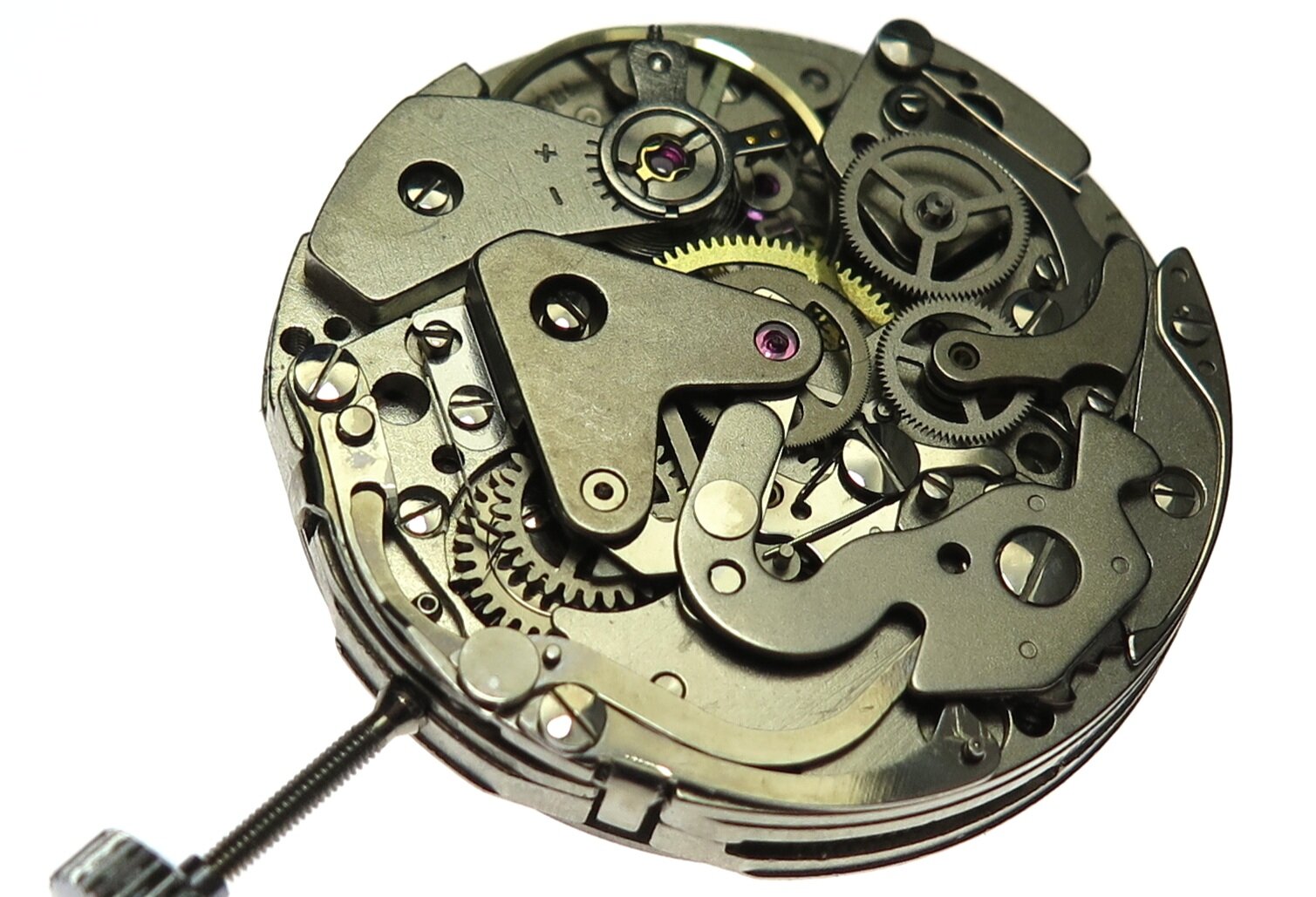
View fullsize
![The index regulating system sits above the balance]()
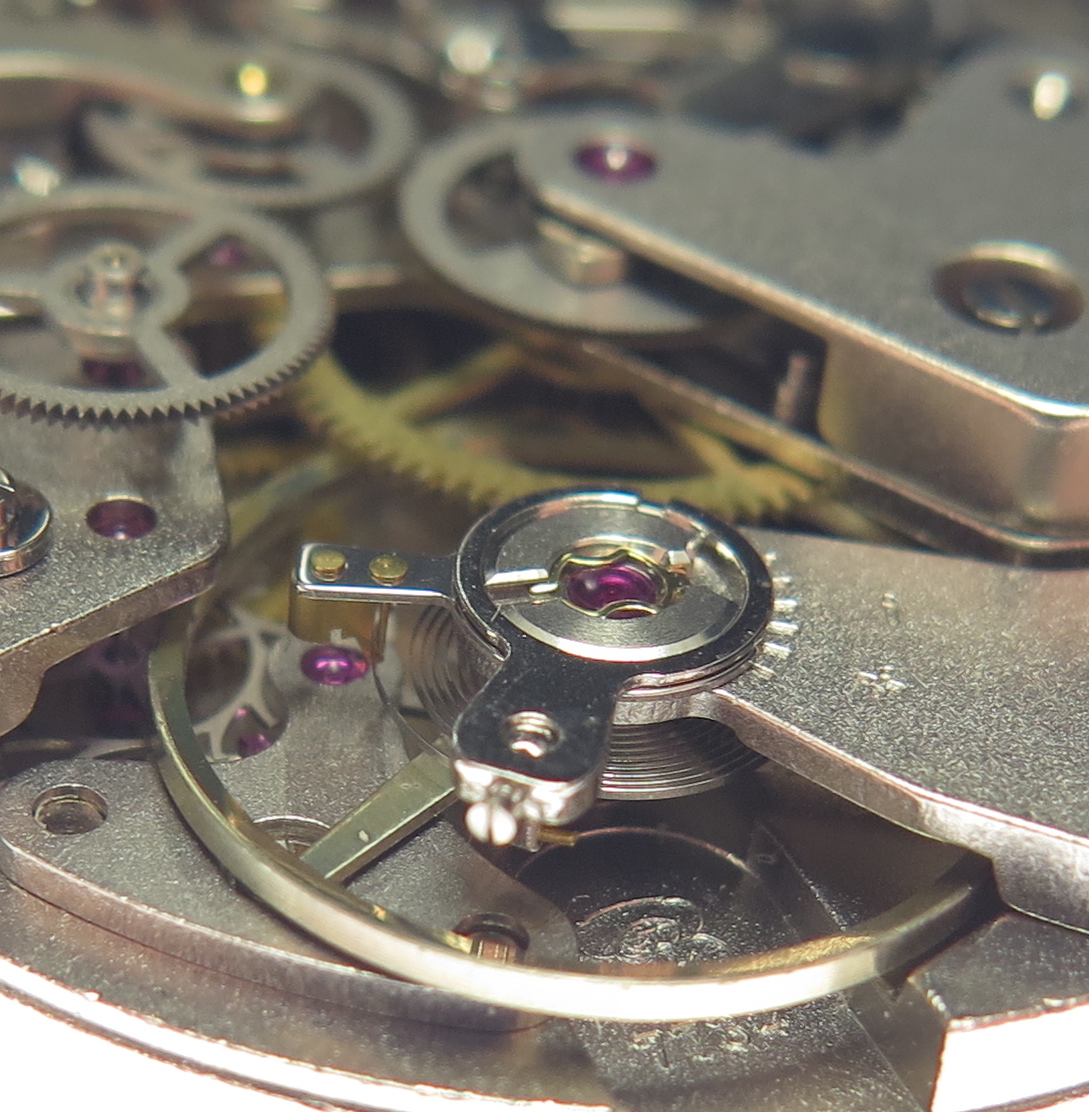
The index regulating system sits above the balance
View fullsize
![Vertical pusher lever]()

Vertical pusher lever
View fullsize
![Cam assembly, replacing the pillar wheel.]()

Cam assembly, replacing the pillar wheel.
View fullsize
![Jumper spring. Indexing the minute recorder wheel]()

Jumper spring. Indexing the minute recorder wheel
View fullsize
![Chronograph wheels. Triangular profile for ease of meshing when the chronograph is activated.]()

Chronograph wheels. Triangular profile for ease of meshing when the chronograph is activated.
View fullsize
![Screws & Eccentrics. The first screw holds a wire spring in place.]()

Screws & Eccentrics. The first screw holds a wire spring in place.
View fullsize
![Under dial. Showing the calendar mechanism.]()

Under dial. Showing the calendar mechanism.
View fullsize
![Calibre. Found under the balance wheel. The -R- symbol in its shield always signifies Valjoux, today owned by ETA.]()

Calibre. Found under the balance wheel. The -R- symbol in its shield always signifies Valjoux, today owned by ETA.
View fullsize
![Chronograph seconds wheel removed from the image.]()
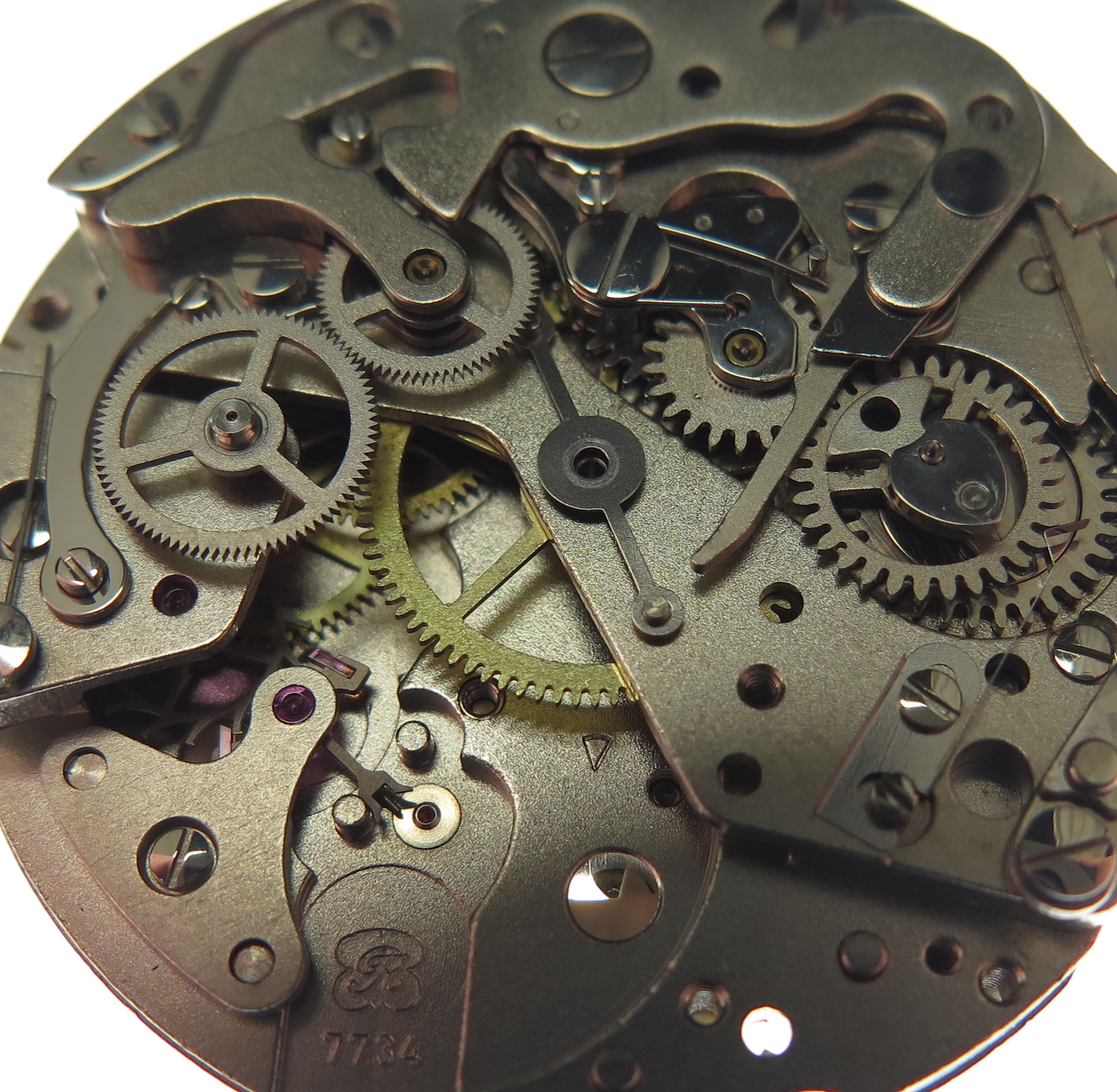
Chronograph seconds wheel removed from the image.
View fullsize
![Cam lever top view]()
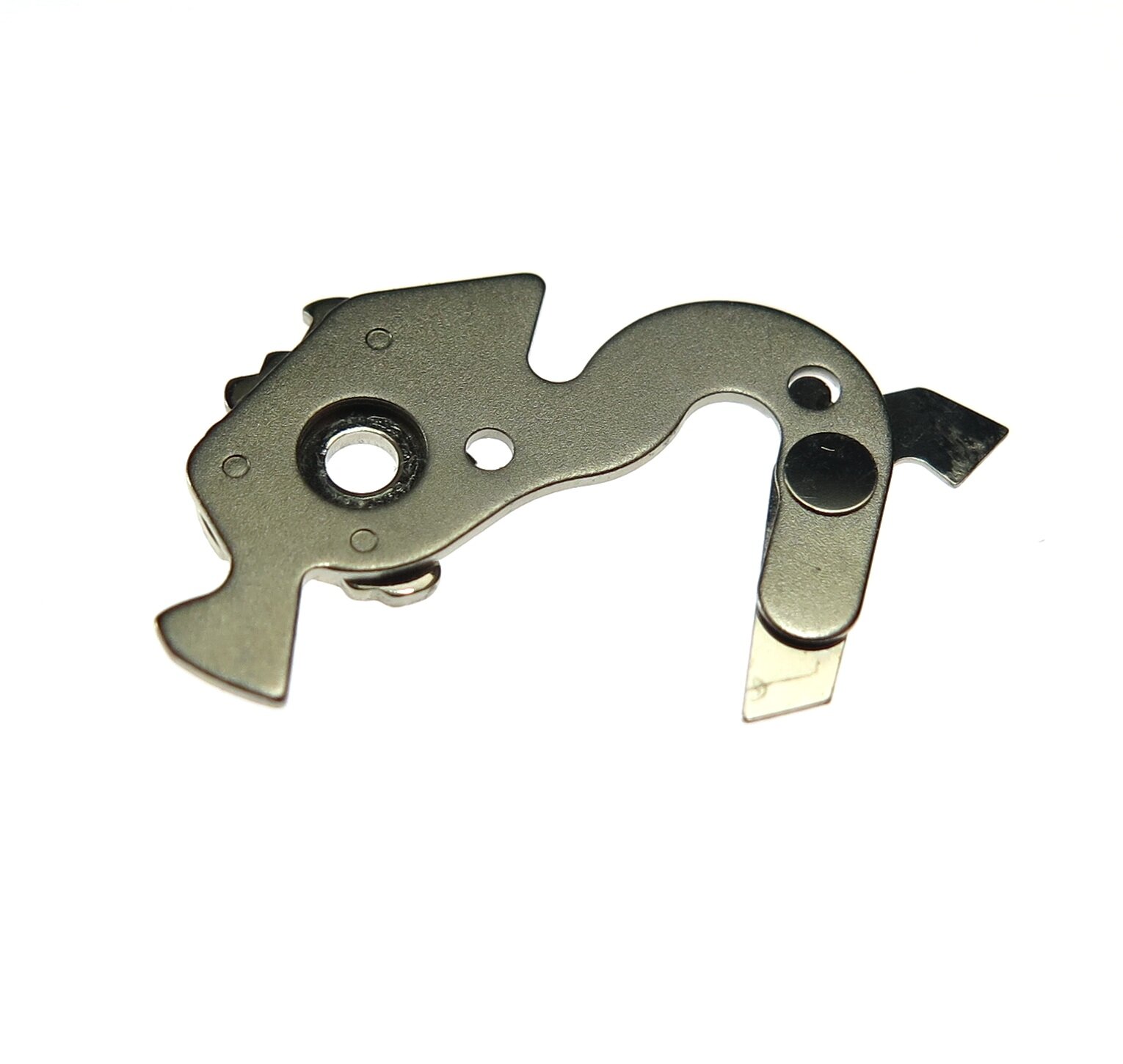
Cam lever top view
View fullsize
![Cam lever. View from underneath, the polished piece to the left is riveted in place]()
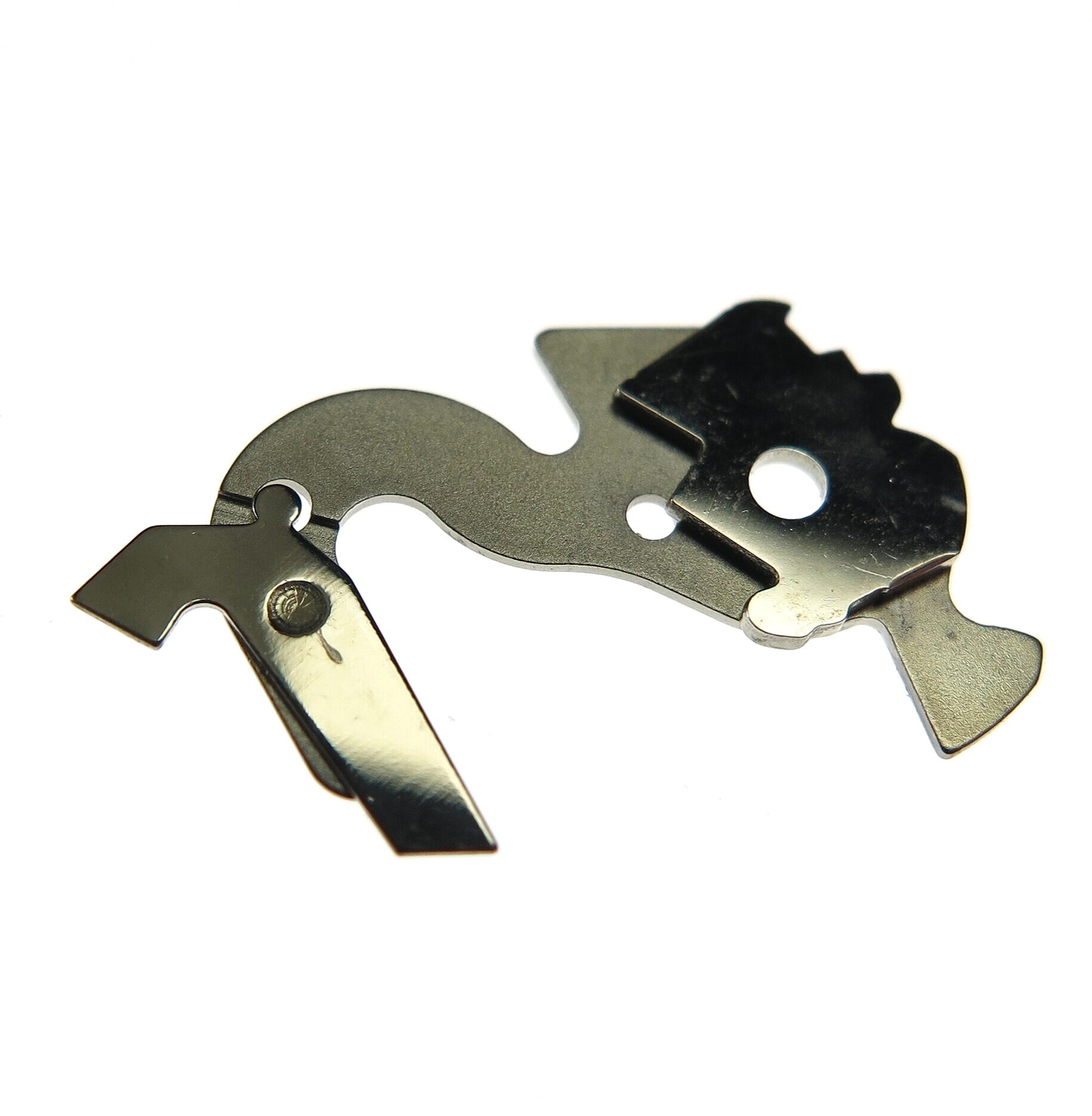
Cam lever. View from underneath, the polished piece to the left is riveted in place
View fullsize
![Minute recorder wheel]()
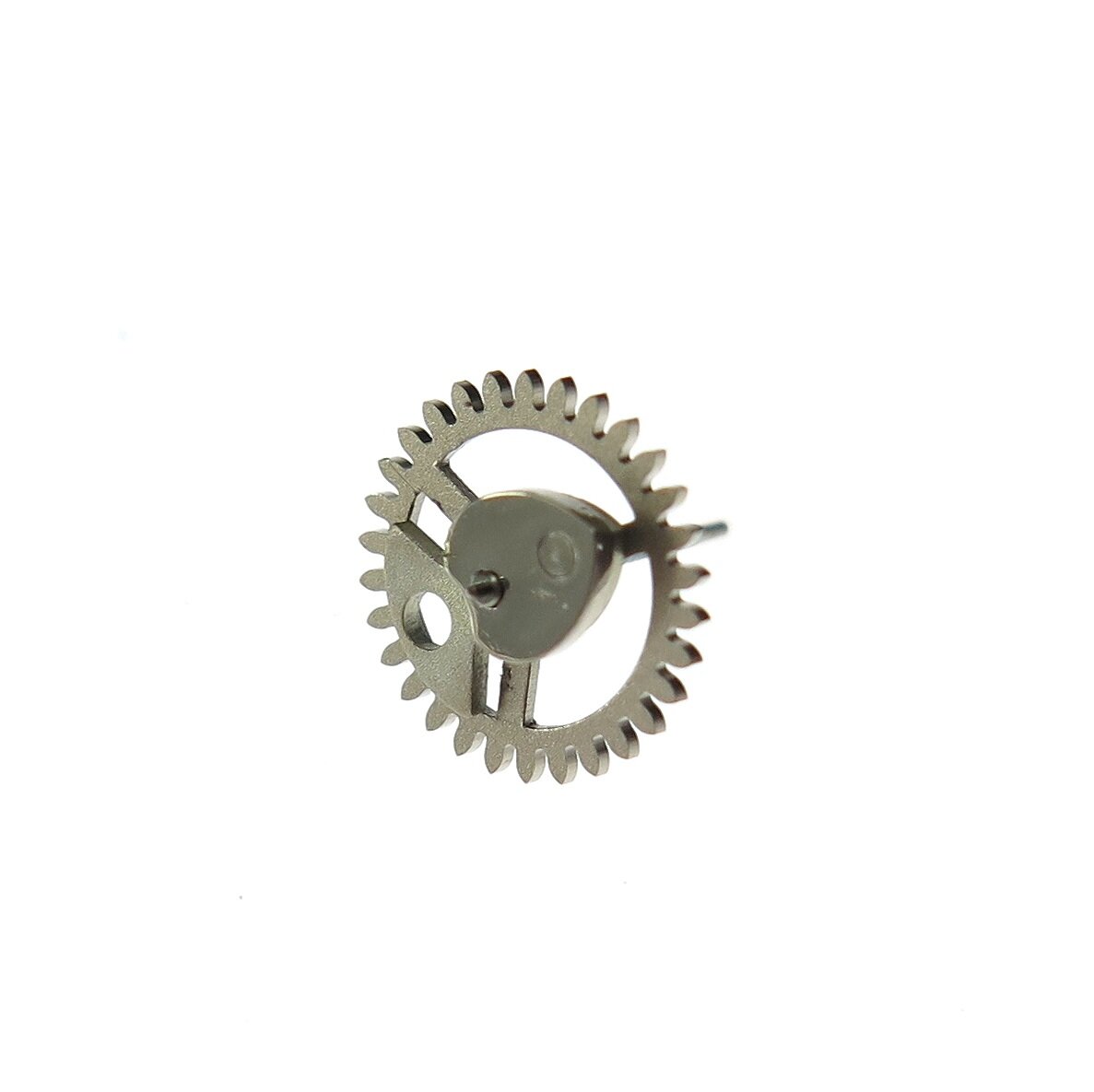
Minute recorder wheel
View fullsize
![Chronograph wheel, upon which the sweep seconds chronograph hand sits]()

Chronograph wheel, upon which the sweep seconds chronograph hand sits
View fullsize
![Friction spring. To add tension to the chronograph wheel to take up any slack..]()

Friction spring. To add tension to the chronograph wheel to take up any slack..
View fullsize
![Brake. For the chronograph wheel which touches this wheel when the watch is -stopped- to prevent it moving instantly.]()

Brake. For the chronograph wheel which touches this wheel when the watch is -stopped- to prevent it moving instantly.
View fullsize
![Chronograph wheel bridge. Which holds the pivoting axes for the chronograph wheel and the minute recorder. Only one is jewelled, the other is bushed.]()
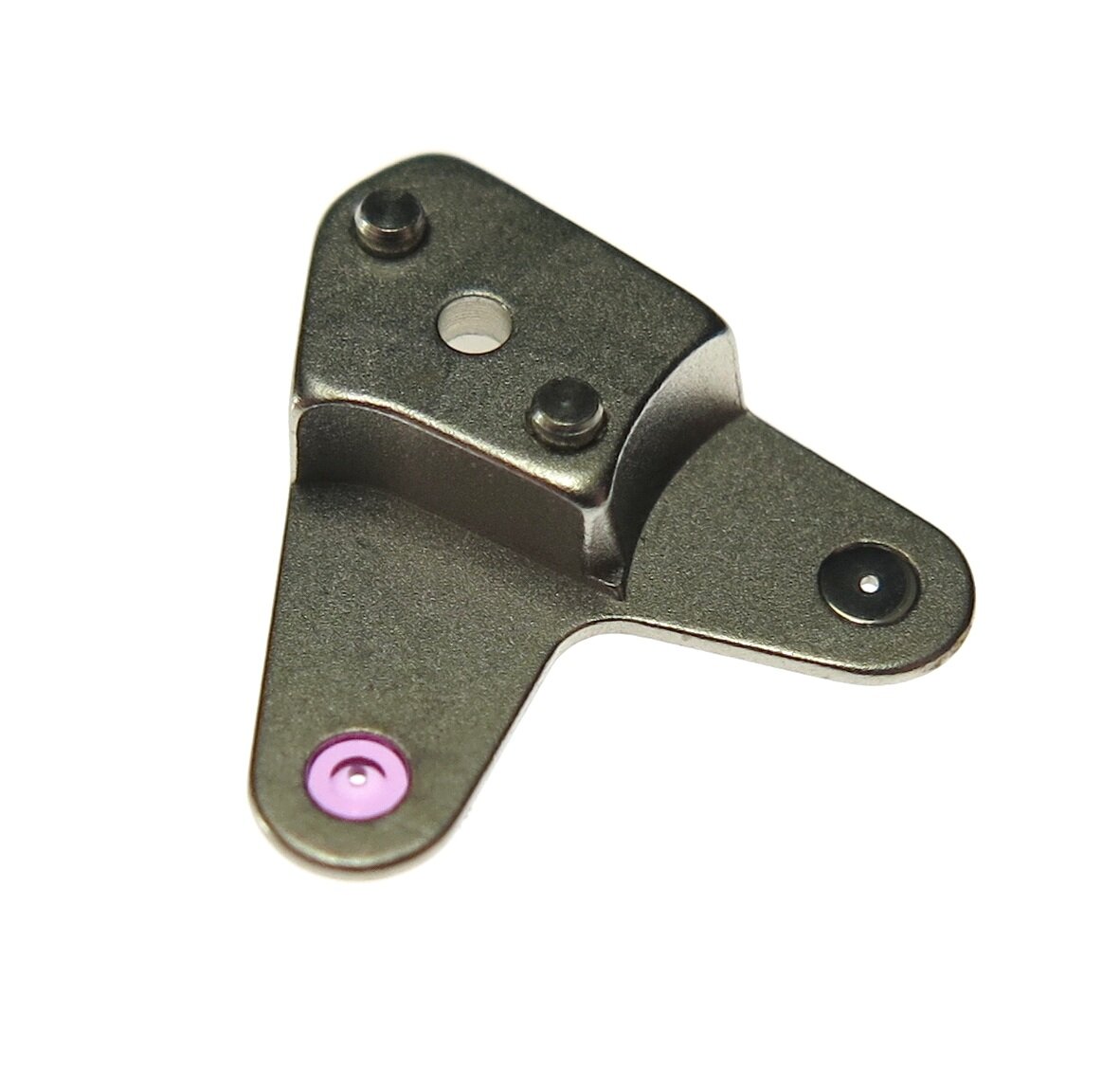
Chronograph wheel bridge. Which holds the pivoting axes for the chronograph wheel and the minute recorder. Only one is jewelled, the other is bushed.
View fullsize
![Underside of balance]()

Underside of balance
View fullsize
![Stud and index. More recently the balance springs are differently held in place, but for several hundred years they were pinned as shown.]()

Stud and index. More recently the balance springs are differently held in place, but for several hundred years they were pinned as shown.
View fullsize
![Intermediate wheel. Pushed by the finger piece on the chronograph wheel intern turning the minute recorder wheel carrying the minute recorder hand.]()
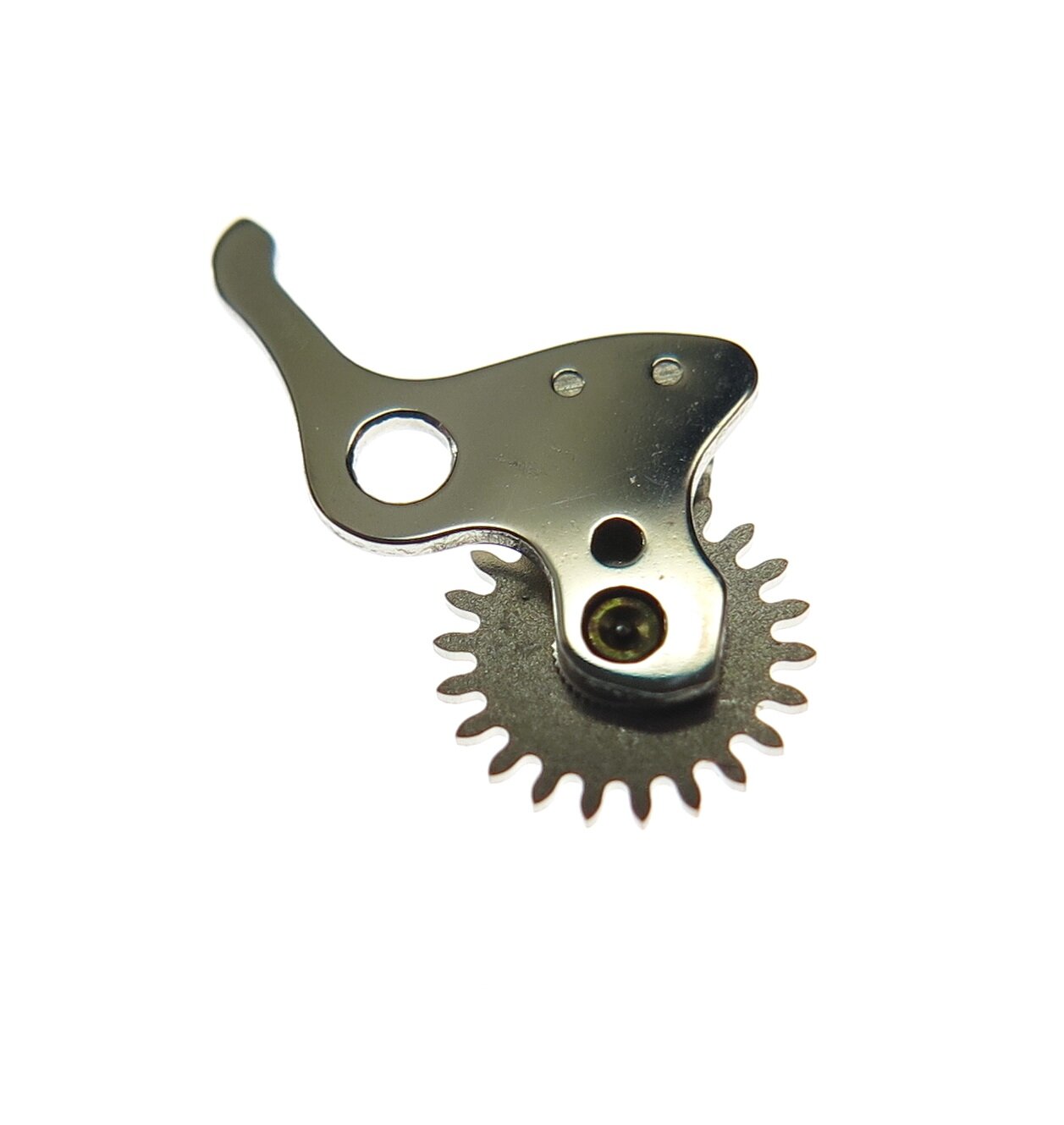
Intermediate wheel. Pushed by the finger piece on the chronograph wheel intern turning the minute recorder wheel carrying the minute recorder hand.
View fullsize
![Intermediate wheel. Underside, the small bridge holding the wheel in place is formed by a stamping process, crude in finish but exact in precision.]()
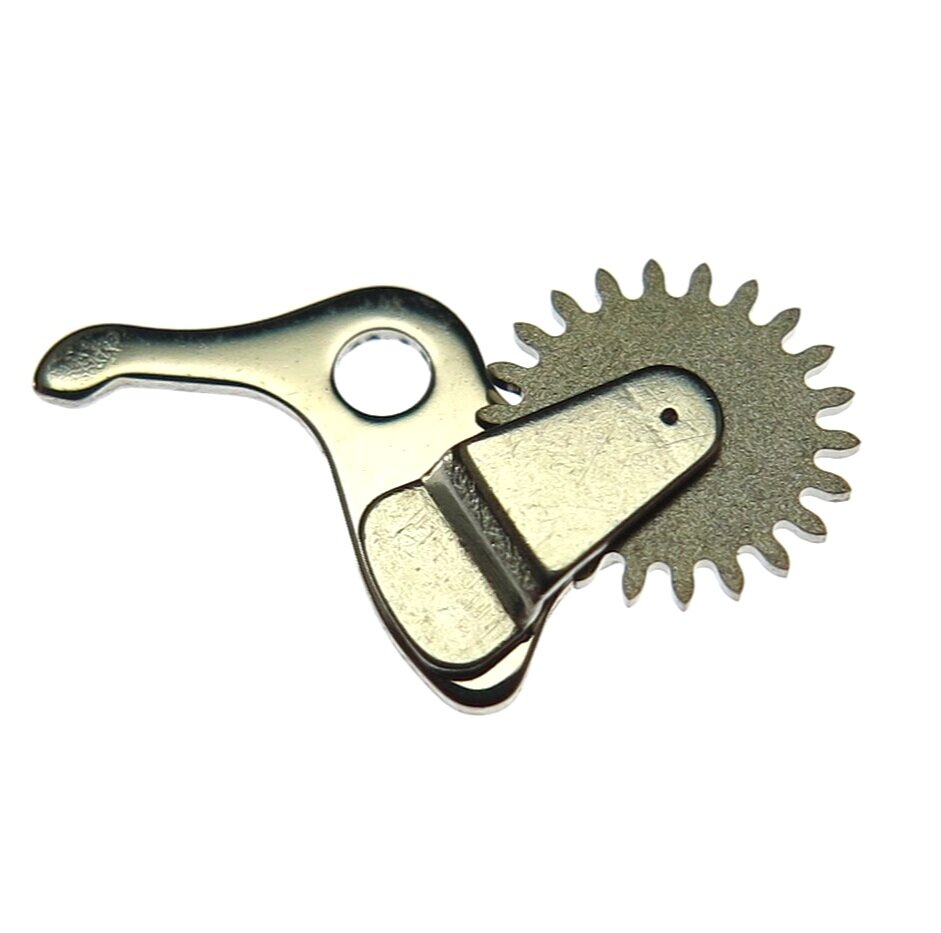
Intermediate wheel. Underside, the small bridge holding the wheel in place is formed by a stamping process, crude in finish but exact in precision.
View fullsize
![Partially dismantled]()
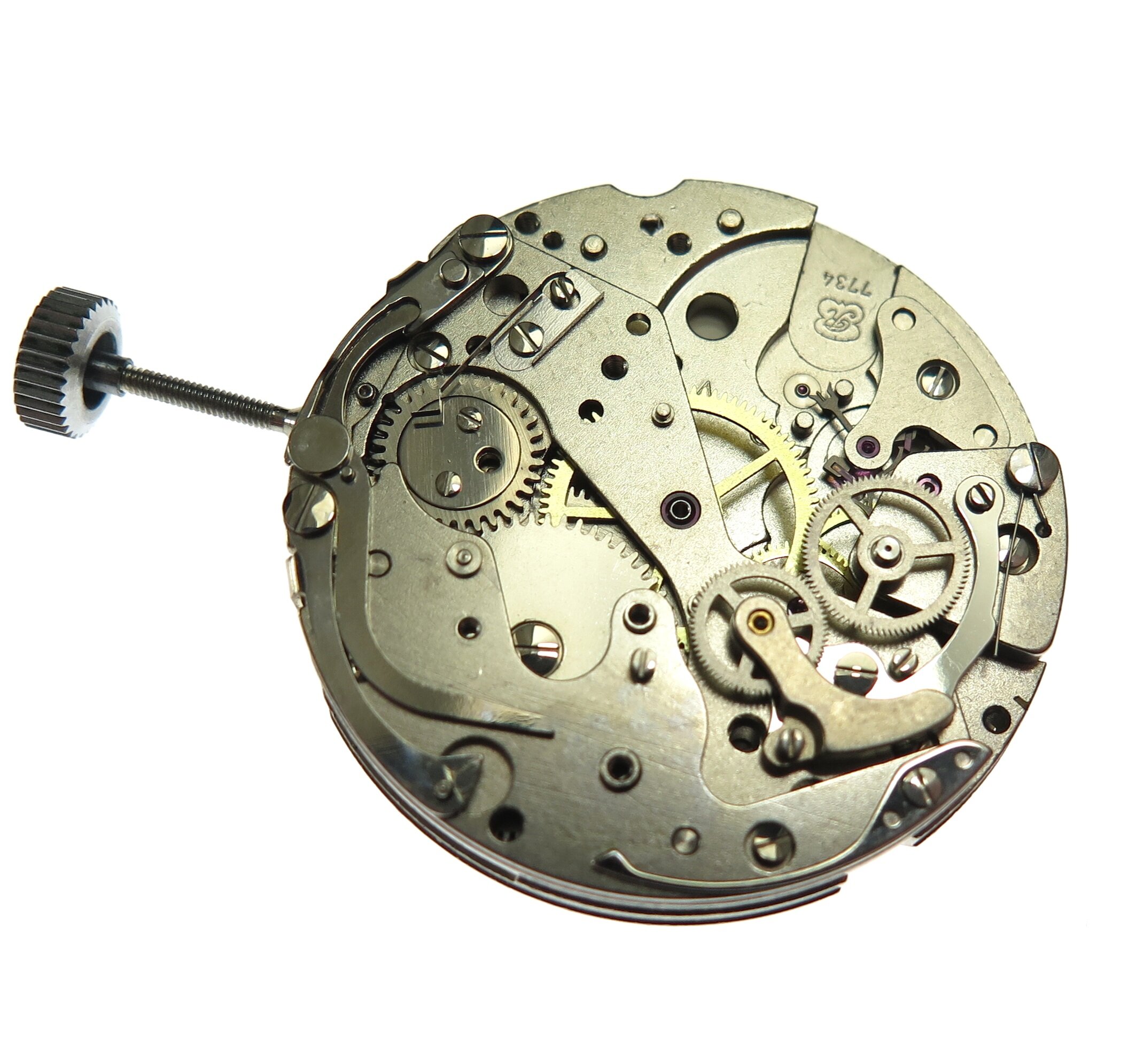
Partially dismantled
View fullsize
![Principle operating lever]()
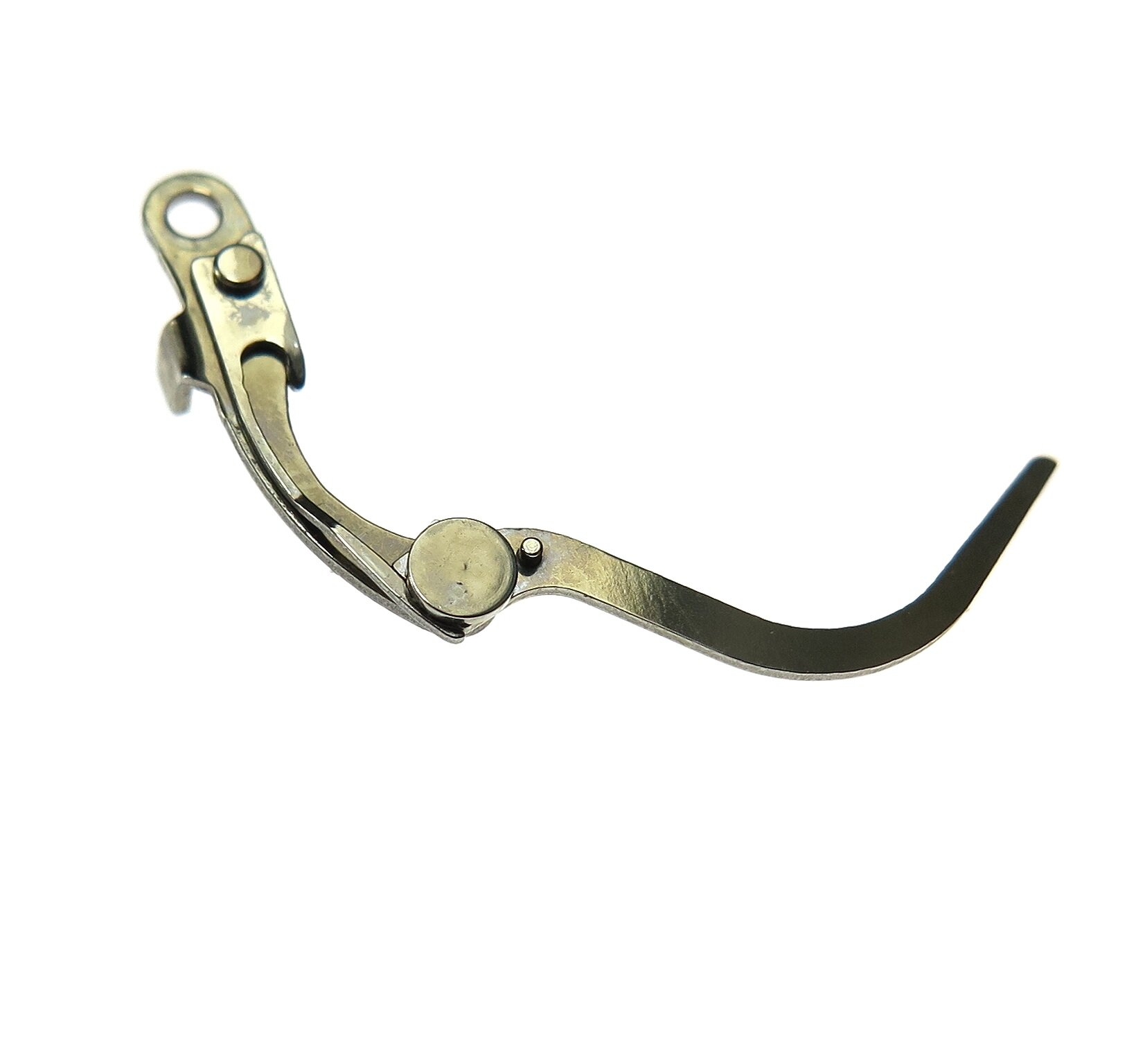
Principle operating lever
View fullsize
![Chrono-plate. Covering the ratchet wheel granting the additional chronograph components surface area.]()

Chrono-plate. Covering the ratchet wheel granting the additional chronograph components surface area.
View fullsize
![Chrono-plate removed]()
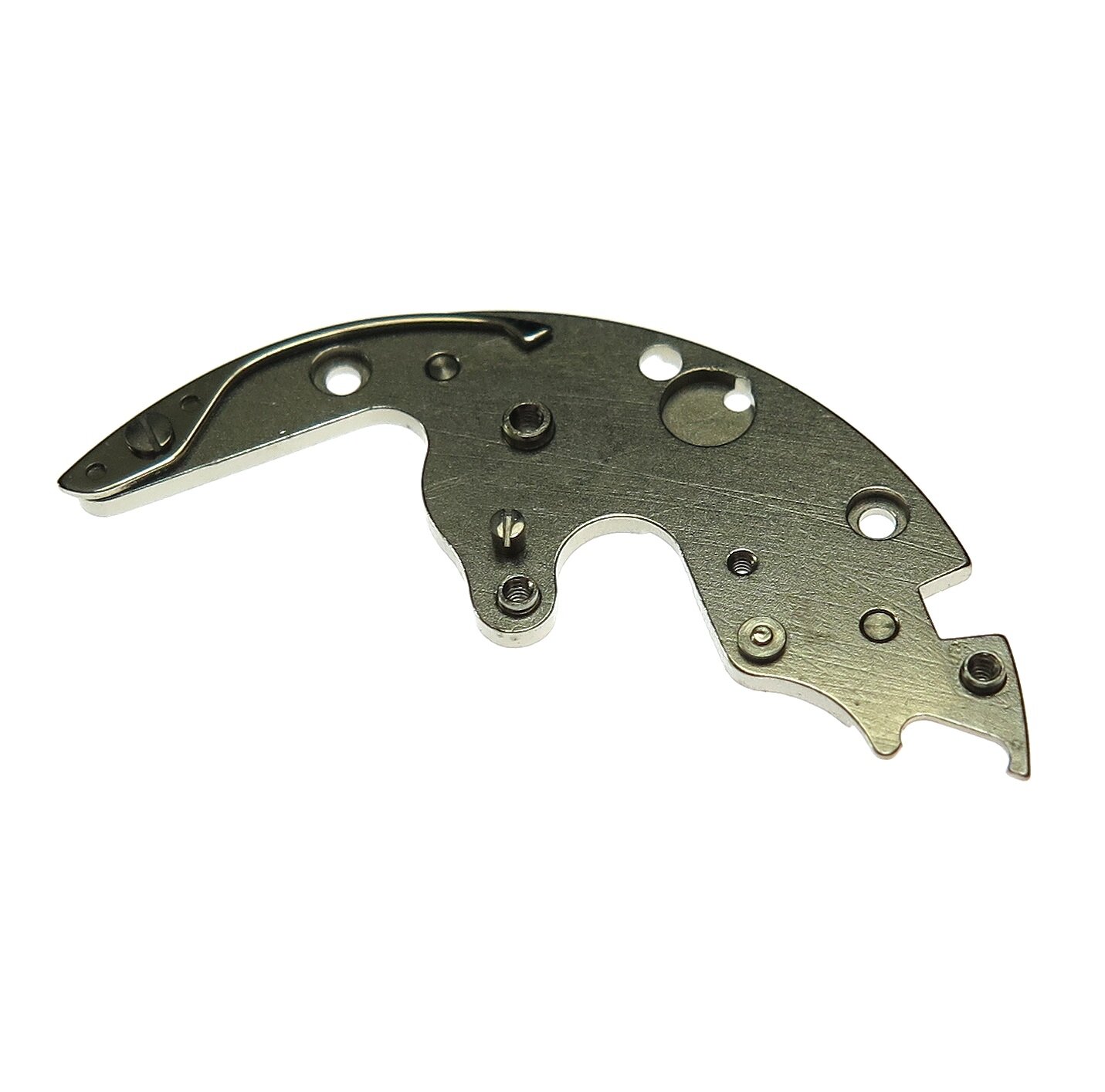
Chrono-plate removed
View fullsize
![Under dial, calendar removed. View showing the mainplate dial side with the calendar removed.]()

Under dial, calendar removed. View showing the mainplate dial side with the calendar removed.
View fullsize
![Calendar driving wheel]()
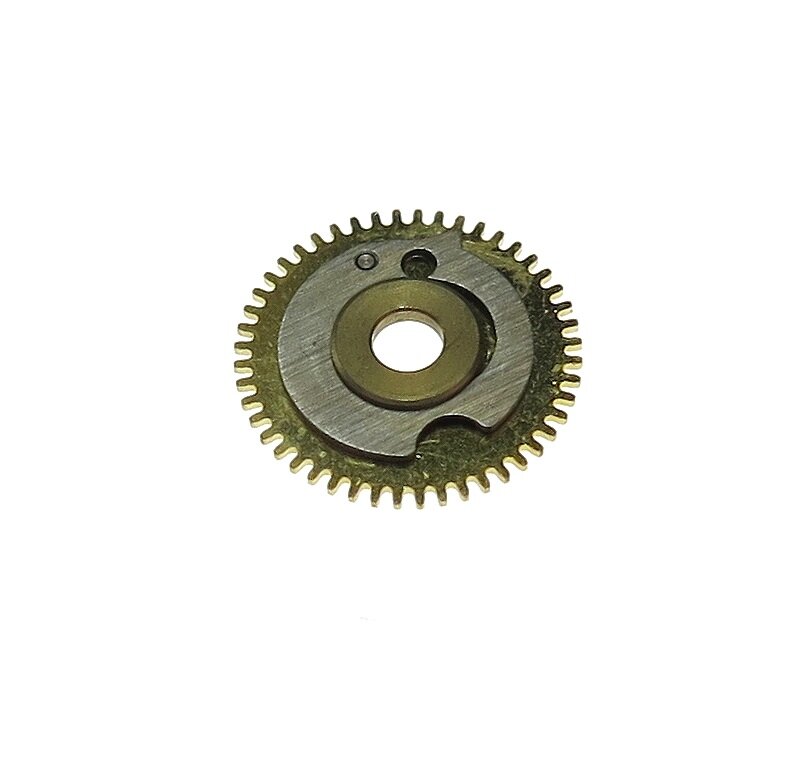
Calendar driving wheel
View fullsize
![Calendar ring]()

Calendar ring
View fullsize
![Calendar bridge. Which holds all the calendar parts in place.]()

Calendar bridge. Which holds all the calendar parts in place.
View fullsize
![Hour wheel]()
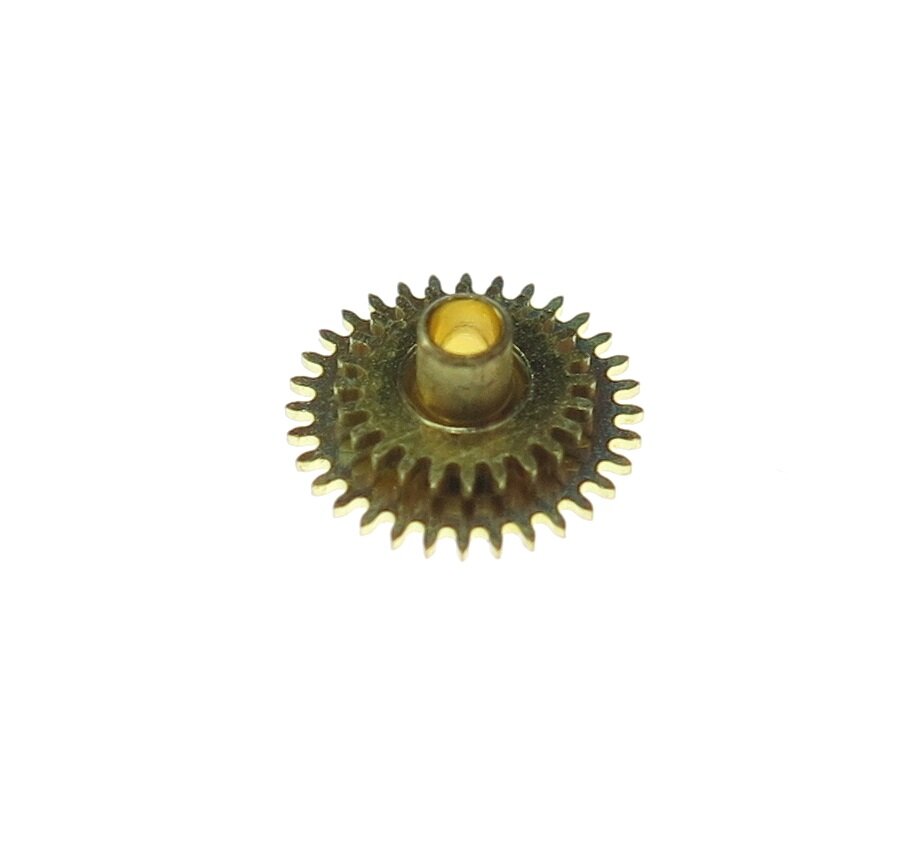
Hour wheel
View fullsize
![Coupling clutch]()

Coupling clutch
